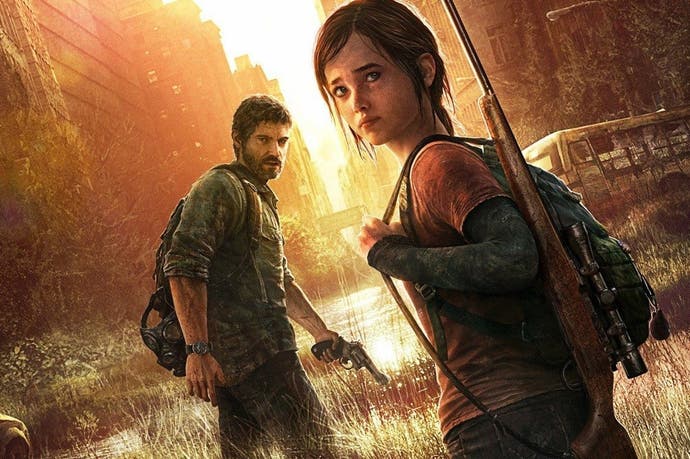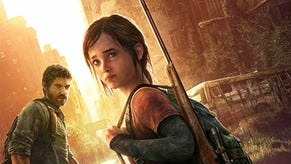Digital Foundry vs The Last of Us Remastered
Has the spruced-up PS3 classic got what it takes to compete in the next-gen era?
Mystery has surrounded Naughty Dog's PlayStation 4 remaster of its survival horror classic, The Last of Us. Announced by error and with a somewhat muted marketing push, it's a remaster where the developer has seemingly been unwilling to actually show us the game in action, a state of affairs that persisted into E3 where it was mysteriously absent from the Sony press booth. Quite why this was the case remains a puzzle - Naughty Dog had nothing untoward to hide. It's a brilliant game.
We'll be approaching it on Digital Foundry via two distinct articles, produced by authors coming to the game from two totally different perspectives. Tomorrow, my colleague Tom Morgan unleashes a full PS3 vs PS4 comparison and tells you about it from the perspective of someone who completed the original - essential reading for any potential double-dippers out there. This article is different: aside from playing through a 20-minute pre-release press demo, I've never played The Last of Us to any great degree. Dim recollections of the demo and editing the tech analysis aside, I've nothing to compare it to - I'll be judging it solely on its merits as a PlayStation 4 game, while at the same time attempting to answer all the major questions players may have.
So let's look at the tentpole enhancements as Naughty Dog has outlined them. Principally, we're looking at 1080p resolution at 60fps in both single and multi-player, a 4x detail increase to texture maps and a 2x resolution boost to shadow maps. Texture streaming is no longer required owing to the PS4's prodigious RAM, and there's longer draw distances, better LOD and improved particle effects. In essence, Naughty Dog has scaled up the original game to full HD and boosted assets to match, while doubling frame-rate. How does that look? Well, we've prepared a 22-minute 60fps gameplay capture here, downscaled from full resolution captures, and we've provided a 1080p60 download that should work just fine on most modern computers - and indeed the PlayStation 3.
This segment - chosen to leave the heart-rending prologue unspoiled - gives a much better account of the quality of the game than the prologue, and it's important to point out that this is a remaster, not a remake. Where existing higher quality assets are available - for example, cut-scene character models - they are utilised (Update 29/7/14 12:34: we're now pretty convinced that the cut-scene models aren't used during gameplay after all), but there's little evidence to suggest that Naughty Dog has upgraded any of the environments, or boosted geometry. First impressions aren't actually that impressive - The Last of Us' prologue initially has you in control of an unenhanced character model and despite the mooted enhancements to texture and shadow quality, the overall impression is that next-gen is actually much more of a leap than you'd give it credit for. Geometry quality is unimpressive, environment detail is relatively spartan and this section does little to showcase the game at its best.
It's also apparent that there's still a yawning chasm between the quality of the pre-rendered cinematics - almost certainly rendered at a much higher resolution, then downscaled - and the game itself, resulting in a jarring leap between FMV and gameplay not helped by a small pause between them. Uncharted's cinematics were rendered in-engine but were designed to look like gameplay with seamless transitions, making for a more consistent experience and that is lacking here. What's clear is that Naughty Dog has completely re-rendered each cut-scene though - they would have been 30fps on PS3 to match the gameplay, and they're running at 60 here, with compression artefacts only really a noticeable problem on very dark scenes.
The allure of a The Last of Us remaster has always been the thought that Naughty Dog pushed the PlayStation 3 so far that once shorn of the host hardware's technological limitations, we could well be looking at a ready-made next-gen title - an argument buoyed by arguments that there is a diminishing return on rendering power with every new console generation. The Last of Us Remastered proves otherwise. There are elements that remain far ahead of the majority of next-gen titles, but it is clear that it is a game of its technological era.
What Naughty Dog has done is to scale up both physical and temporal resolution, but the core technologies are very much PS3 in nature. The mind-bogglingly good anti-aliasing seen in the Uncharted 4 teaser isn't here, for example. Instead, it's a reasonable enough post-process effect. It's good at smoothing edges, but there is shimmer in motion. Lighting can appear rather basic and harsh in some scenes, the pre-baked global illumination isn't a patch on top-end PS4 titles, and while texture detail is enormously improved to next-gen standards, geometry remains unchanged - those hexagonal pipes, squared-off edges and bisecting polygonal foliage textures look jarring in the new current-gen era. Shadowmaps get a 2x detail boost, but the quality in relation to resolution remains unchanged - those dynamic real-time shadows can look pretty low res on PS3, and they still do here - and contrary to reports they appear to remain the same, with identical cascade transitions if you toggle the game to run at the optional 30fps.
After 45 minutes of searching, swapping between frame-rates, walking backwards and forwards looking at shadows, we noticed nothing untoward at all. If there is a difference at some point in the game, we can only assume it's a minor bug and not something that is likely to make you feel shortchanged by running the game at 60fps. Certainly we can think of a whole host of changes Naughty Dog could have implemented instead with double the render time - a measure of super-sampling working in concert with the post-process AA, for example, could have made a real difference. Update 28/7/14 14:35: Yes, improved shadow quality at 30fps is in the game but only once the day one patch has been applied. The EU release rolled out considerably behind the US version, hence the confusion. We'll have more on the update soon.
However, while its last-gen origins are at times obvious, there's no doubt that The Last of Us Remastered can look simply sensational. The boost in resolution combined with the enhanced textures emphasises the sheer class of Naughty Dog's artwork at all times. The contextual animation system and stunning performance capture is still up there with the best, and it is only enhanced by the move from 30 to 60 frames per second. The more detail-rich exterior scenes, enhanced with longer view distances, look especially beautiful bathed in the ambient lighting and god-rays from a setting sun. While effects work can look a little basic in places, the higher precision marries up perfectly in most cases with the full HD resolution, while some effects - such as water reflections - put a lot of full-blooded PS4 and Xbox One titles to shame.
Could The Last of Us Remastered have been better? Well, for every area of extreme beauty, there's another where the last-gen origins come to the forefront. You can't help but wish that Naughty Dog could have followed the example of, say, Stranger's Wrath - tidying up the most obvious areas with enhanced assets. Other effects clearly show their age too - if a revised global illumination pass was too much, maybe improved ambient occlusion could have smoothed out some of the harsher lighting.
However, more GPU-intensive effects may have impacted The Last of Us Remastered's other major enhancement: 60fps gameplay, doubled from the PS3 30fps standard (and based on our analysis videos, a target it frequently had issues sustaining). To answer the question everyone's been asking, frame-rate isn't locked to 60fps, but The Last of Us Remastered does spend the vast majority of its time at the optimal refresh. Problems can kick in during busy combat scenes, and just like the PS3 version, particles and transparent effects in particular can take their toll - the first confrontation with a fungus-spewing Bloater sees frame-rate hit a minimum of 46fps.
The good news is that this is pretty much as bad as it got across multiple hours of gameplay, and it's telling that in the 14-minute performance analysis video below (comprised of a number of gameplay clips), the game holds its lock well for the vast majority of its duration. You'll need to skip ahead to the ten minute mark to see the combat clips that caused genuine issues for this first iteration of the Naughty Dog engine running on PS4. At this point it has to be said that the game's day one patch was not available for testing, so there remains the possibility that things may improve once that hits - and we'll be sure to update you if that is the case.
Overall, across the majority of the run of play, frame-rate dips usually account for nothing more than occasional stutter. The locked 30fps option is a nice addition, and for those that can't stand the CG-like effect, you'll be happy it's there, but variable frame-rate consistency issues - while jarring when you experience them - are few and far between. What is interesting though is that control response feels a little heavier than we'd expect from the 60fps standard. There's always been a certain heaviness to the controls of the PS3 Naughty Dog games - especially from Uncharted 2 onwards - and it's still felt here.
This may raise concerns for The Last of Us' multiplayer mode, but in actual fact, the Factions online game is a radical departure from the standard twitch shooter. There is blasting - and lots of it - while the bone-crunching melee combat from the single-player game also makes its way across, but Factions is all about tactics and stealth. Running about blasting reveals your position to the enemy - this game mode is all about taking your time, accruing supplies, building and upgrading your arsenal and letting the enemy have it via a series of surgical strikes.
It is the perfect multiplayer complement to the single-player game in that Factions isn't about instant gratification - it builds suspense, allowing skilled players to get the drop on their opponents, their demise secured often without firing a shot. Stealth kills are hugely satisfying, while the sheer brutal violence of a weapon-equipped melee kill can be quite shocking. Graphics are often pared back in multiplayer games, but The Last of Us retains its quality level more than say, Call of Duty, so in terms of judging a last-gen game by current-gen standards, Naughty Dog's title holds up very, very nicely indeed.
Frame-rate is mostly in 60fps territory for the duration, but just like the single-player mode, there are dips in the heat of the action. Our lowest reported reading came in an enclosed room with multiplayer games and saw frame-rate dip to the mid-40s, but that is the exception rather than the rule. Given the choice between an occasional wobbly 60fps and a locked 30fps, we'll take the former.
Yesterday we posted an article about key PS3 and Xbox 360 titles that were next-gen before their time - games that were held back by the hardware they were running on, where PlayStation 4 and Xbox One could really make a difference. These titles ended up being divided into two camps: those with ready-made PC enhancements developers could draw upon, and first-party exclusives that pushed the systems to their limits.
Titles like Tomb Raider: Definitive Edition were built with scalability in mind across a vast range of potential playback platforms while the development effort on The Last of Us focused entirely on PlayStation 3 - so with the remaster, enhanced texture detail, effects precision and substantial boosts to physical and temporal resolution are your lot. Some scenes can look rather plain, while others look absolutely spectacular, but the one thing that is constant throughout the experience is that gameplay in The Last of Us is golden. Naughty Dog mastered the popcorn Hollywood blockbuster approach to gaming with the Uncharted series, while The Last of Us sees the developer growing up, using the skills it mastered to bring us a story with believable characters and epic world-building married up with a perfect evolution of the survival horror gaming genre. In effect, it is the anti-Uncharted - rollercoaster thrills and a sense of action hero indestructibility are replaced by fear, suspense and the need to employ brains before brawn.
In all of these things, Naughty Dog has demonstrated that it is a games studio without compare and nothing on the new wave of consoles quite compares. This game is a masterpiece. However, if there is one major criticism, it comes down to the AI not fully respecting the rules of the world that Naughty Dog has defined. If you see a Clicker, you duck down and you freeze. In a densely populated Infected area, you dare not fire your gun as the noise would attract untold hordes. You may not have the shiv required to make a stealth kill and you may not have the supplies required to craft one. In which case, you're frozen on the spot, quietly hoping for the creature to shamble by - a moment of absolute suspense entirely compromised when AI companions like Ellie or Tess occasionally run directly in front of them as they move from cover to cover. If you did that, you'd be killed on the spot. Moments like this detract from the believability of the world - especially when your primary aim is protect Ellie. There's the split-second fear that she's a goner through no fault of your own before you realise that everything's OK and it's just a duff example of the AI at work.
In summary, is The Last of Us Remastered truly next-gen before its time? In many ways, yes. A defining technological statement for the PlayStation 3 transitions across to PS4 very well overall, but the big takeaway from our experience is that there's more to a game's next-gen credentials than the quality of its pixels alone. Gameplay truly is king and you'll struggle to find any game on PlayStation 4 or Xbox One that matches up to the sheer quality on offer here. If you're new to PlayStation and haven't played The Last of Us before, it is recommended without reservation - you'll get more value out of this game than the vast majority of full-price PS4 software. And if you've already played it on PlayStation 3? We'll have answers for you on that front tomorrow.
We've got a complete walkthrough for the remastered version of the game.











